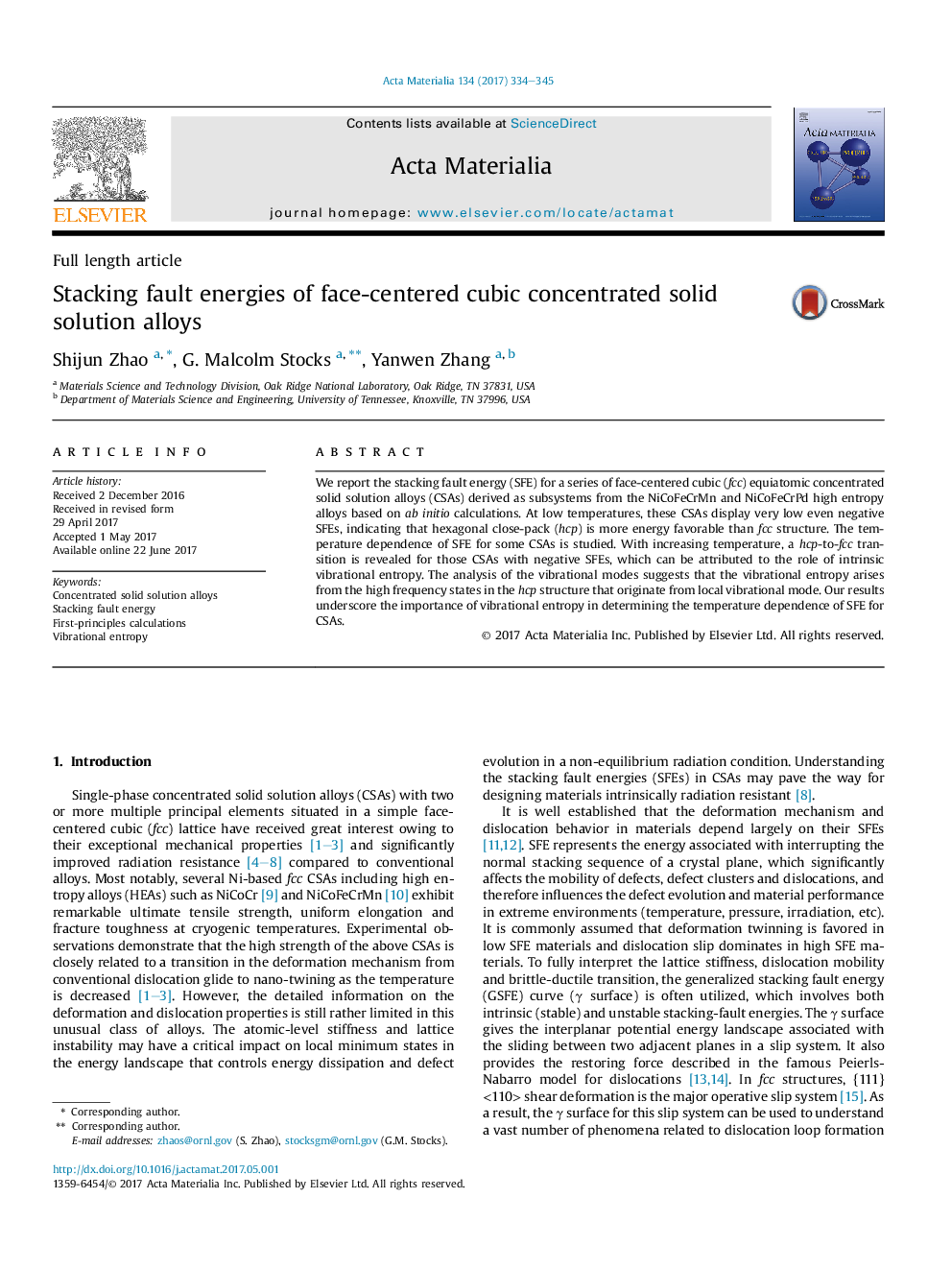| Article ID | Journal | Published Year | Pages | File Type |
|---|---|---|---|---|
| 5435988 | Acta Materialia | 2017 | 12 Pages |
We report the stacking fault energy (SFE) for a series of face-centered cubic (fcc) equiatomic concentrated solid solution alloys (CSAs) derived as subsystems from the NiCoFeCrMn and NiCoFeCrPd high entropy alloys based on ab initio calculations. At low temperatures, these CSAs display very low even negative SFEs, indicating that hexagonal close-pack (hcp) is more energy favorable than fcc structure. The temperature dependence of SFE for some CSAs is studied. With increasing temperature, a hcp-to-fcc transition is revealed for those CSAs with negative SFEs, which can be attributed to the role of intrinsic vibrational entropy. The analysis of the vibrational modes suggests that the vibrational entropy arises from the high frequency states in the hcp structure that originate from local vibrational mode. Our results underscore the importance of vibrational entropy in determining the temperature dependence of SFE for CSAs.
Graphical abstractBoth supercell and axial interaction model indicate that some concentrated solid solutions exhibit negative stacking fault energies, which suggest hexagonal close-pack (hcp) is more energy favorable than face-centered cubic (fcc) structure. A hcp-to-fcc transition is revealed for these CSAs at finite temperature, which is attributed to the intrinsic vibrational entropy originated from local lattice relaxations.Download high-res image (162KB)Download full-size image
